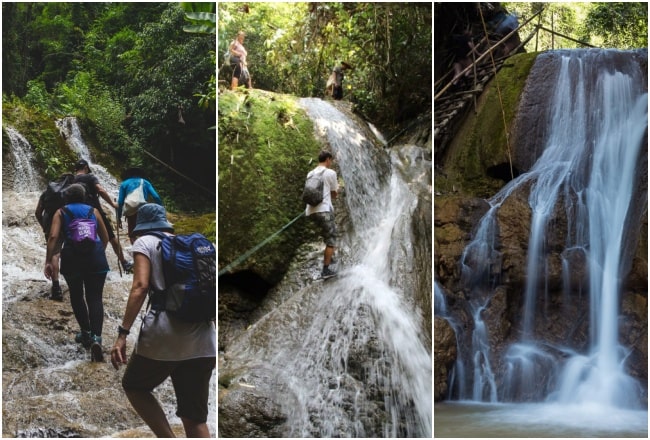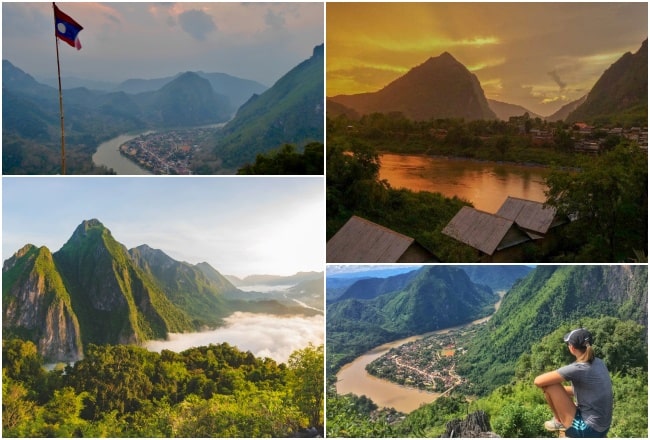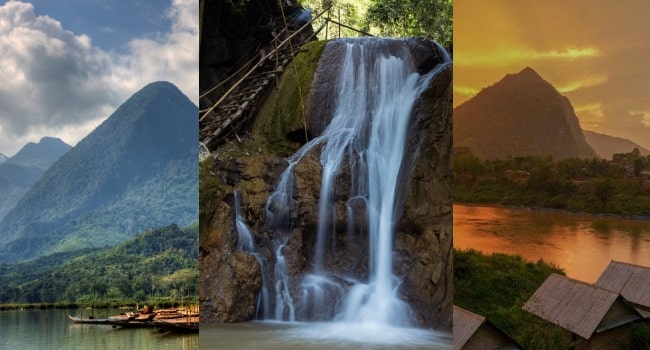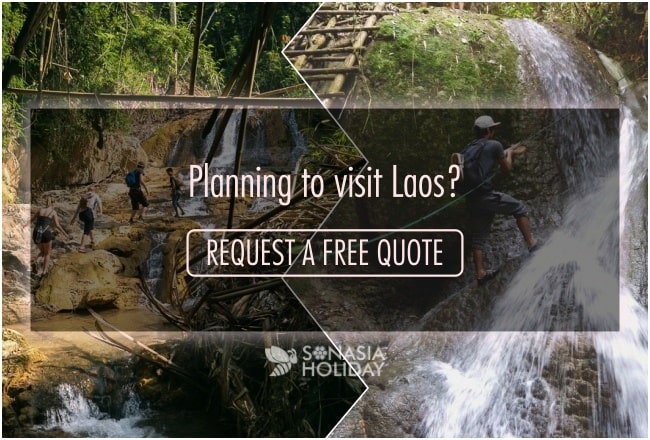Starting from Nong Khiaw in the early morning, our guide Dhit sat quietly as we drifted around 10km downstream along the calm Nam Ou River in a narrow long-tail boat. Ladies who were busy washing their clothes in the murky water stopped to wave as we passed, while fishermen smoked silently in their boats -- a scene that would probably have looked the same 100 years ago. After an hour, we came to rest and we climbed up the riverbank to the tiny stilted-house settlement of Don Khoun, where we were joined by an additional village guide, provided as part of Tiger Trails’ initiative to involve locals in the tourism activities.
The Lao government has plans to build a series of dams along the Nam Ou River, which would have a profound impact on the area. While the timing of the construction is not yet known, such a scheme would almost certainly lead to the forced resettlement of the Lao-Khmu community of Don Khoun, just as the residents have begun benefitting from tourism through their village. As for the waterfalls themselves, no-one yet knows how the damming plans for the Nam Ou might affect this natural wonder – so if you want to see it, now is the time to go.
On the following 45-minute hike through flat jungle terrain and along the edges of rice fields, the occasional screams from behind indicated that yet another blood-sucking leech was drinking from one of the eight trekkers in our group. Even so, as we began to hear the sound of gently tinkling water, Dhit invited us to remove our walking boots and change into our sandals: it was time to get wet.
We began our slow ascent through the shallows of the first group of waterfalls, the cool water reaching up to our ankles and providing welcome relief against the heat of the morning sun. For much of the way it was a gentle wade through shallow water, the wet rocks providing a surprisingly firm grip for both sandals and bare feet. Occasionally we used our hands to pull ourselves up large sets of smooth rocks, and as we climbed, the jungle grew denser and the waterfall became steeper. Soon the only sound was the water tumbling down to meet us, drowning out the voices of the other trekkers. At several points, the rocks were too high or the climb too steep, and fragile bamboo ladders or ropes had been placed to make the ascent a little easier.

After 90 minutes of climbing up the increasingly powerful waterfalls, we reached the top of the trail. Ahead was a 20m high waterfall well beyond our climbing ability; below us the thick jungle canopy out of which we had just climbed. As we enjoyed the mist that sprayed off the thundering falls, our guide got to work cutting down banana leaves, laying them out as tablecloths and unpacking a splendid meal of cooked aubergine, fresh salad and omelettes.
Walking back to the village after lunch, the route followed a dry and pleasant jungle trail away from the waterfall. The path initially skirted the top of the canopy, offering extensive views of the Nam Ou valley below, before once again dropping into the shade of the jungle, providing welcome relief from the intense midday heat. For a little over an hour we followed the trail as it wound through the trees, crossing the occasional stream before arriving back in Don Khoun where our boat was waiting for the return journey to Nong Khiaw.
The 100 Waterfall Trek is not physically demanding, although the heat and humidity do add to the challenge. But the opportunity to experience the natural beauty of this little-known part of rural Laos should not be missed – especially as its long-term future is far from certain.





 11/01/2026
11/01/2026


















Jordan VituHello, my name’s Jordan and I’m obsessed with travelling overland. Seeing how cultures change while travelling slowly captivates me; and doing so in an eco-friendly way, preserving the cultures and landscapes that so many travellers yearn to explore, has given me my travelling purpose.